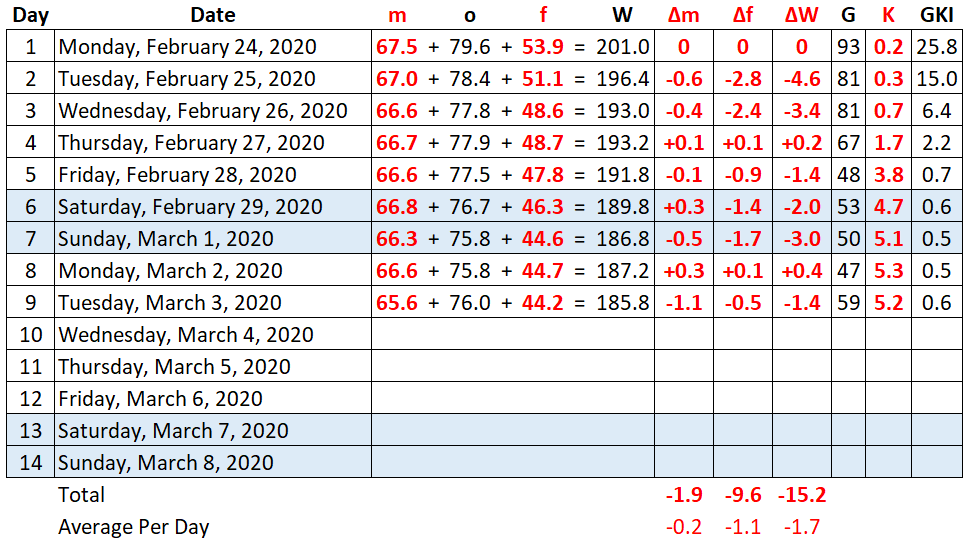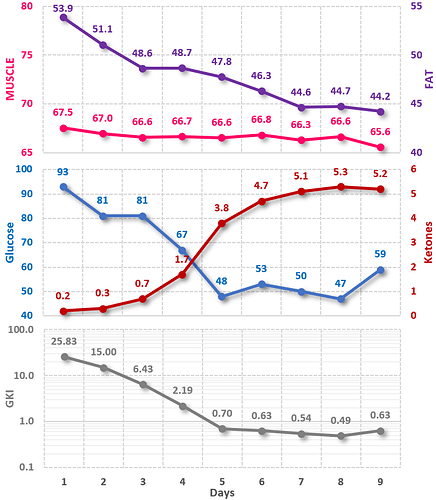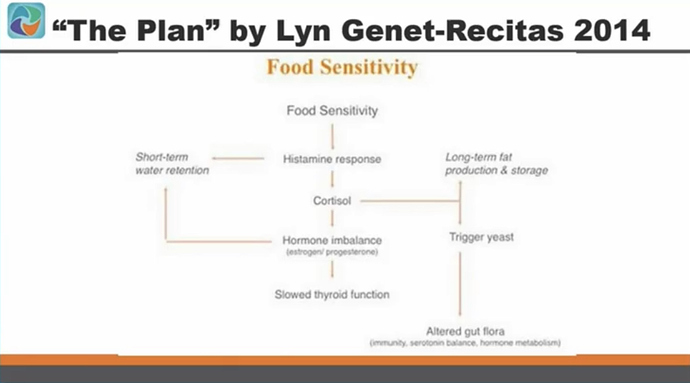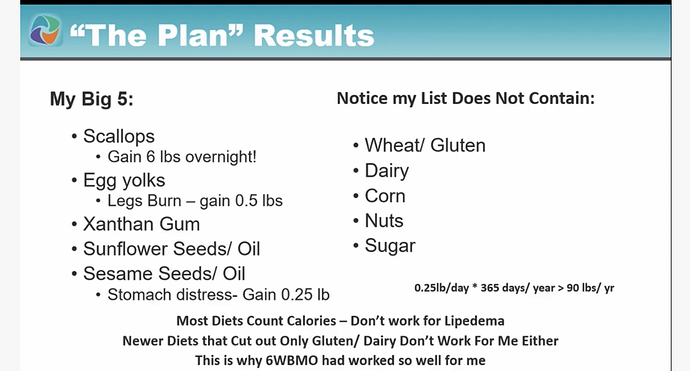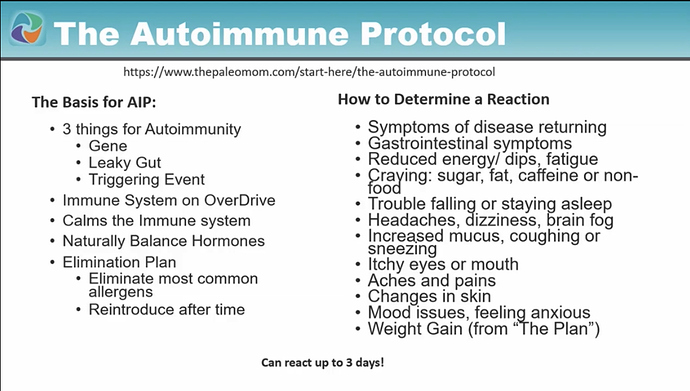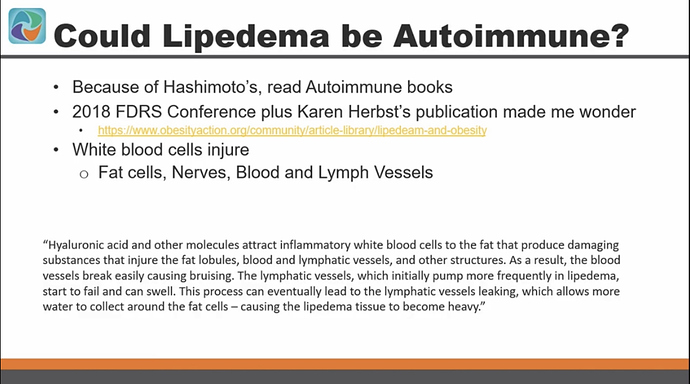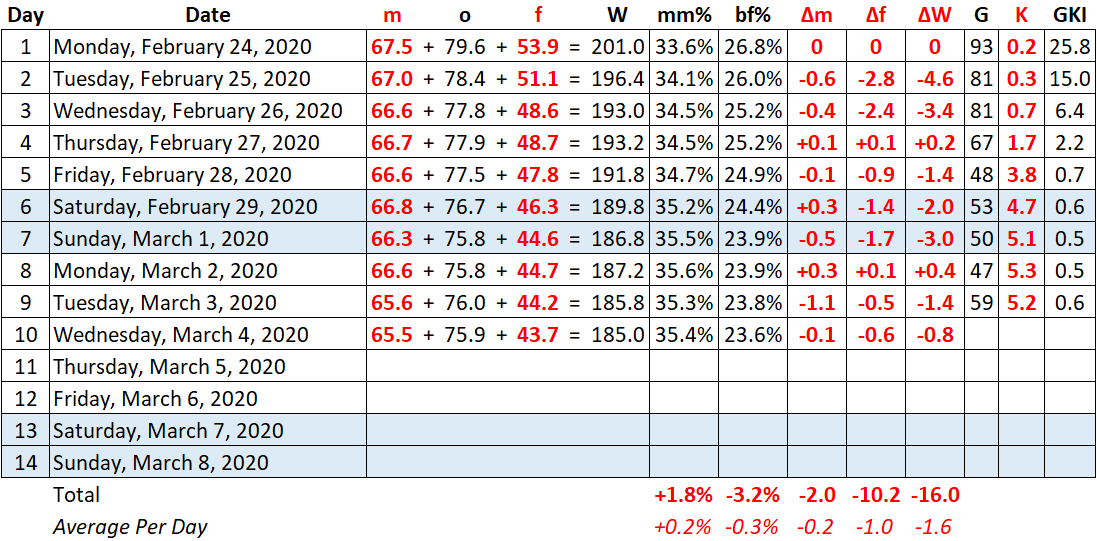Good stuff, Karim - it’s fascinating to see the numbers progress.
As I recall, you figured a little less than 1/2 lb. per day fat loss during your fast last year.
My real question is how much water is lost (or gained), in our various tissues. I don’t advocate dry-fasting, nor have ever done it myself, but there things are much easier to keep track of. One YouTube guy did a longer dry fast, and weighed all his urine. His claim, which is a frequent one, was that “this proves dry-fasting is miraculous, results in much greater fat loss,” etc.
It’s almost always the case that people forget about the insensible water loss - water loss through the skin and via exhalation. It averages 700-800 grams per day. He started about 190 lbs., and figuring 1/2 lb. per day of fat loss, plus weight lost as urine, plus the insensible water loss at 1.6 lbs. per day - the numbers worked out almost exactly to his final weight.
In reality, things may not be that simple - there are other considerations. If lean mass is being lost, it has to be accounted for. If water is going into fat tissue to replace lost fat, same deal. (And heck, there’s stuff like after 20 days one has lost about 1/2 lb. in shed skin cells.  ) It seems to me that scans and scales can’t accurately handle the hydration changes.
) It seems to me that scans and scales can’t accurately handle the hydration changes.
My own experience while fasting, drinking water and black coffee, and supplementing with salt, is that I still lose a lot of water weight. I wonder how much we’re left guessing…

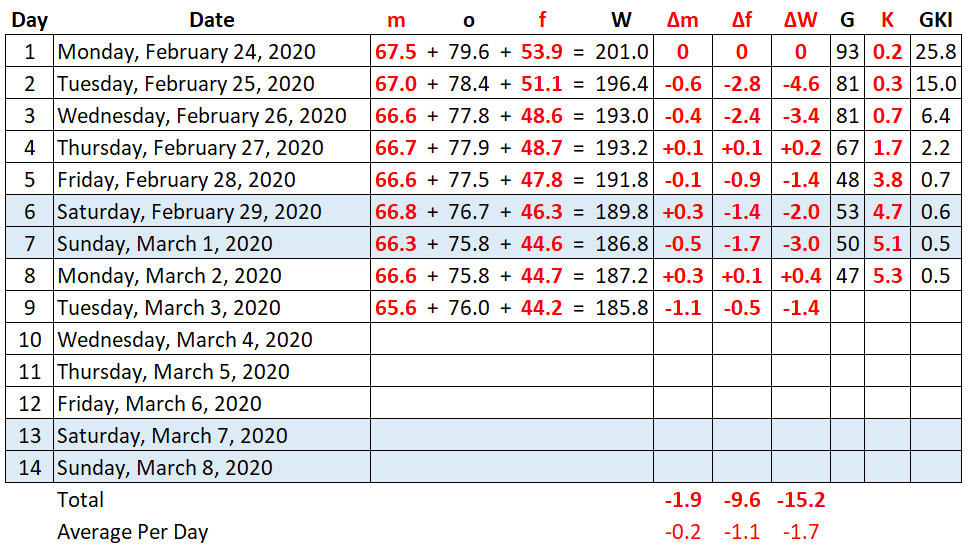


 ) It seems to me that scans and scales can’t accurately handle the hydration changes.
) It seems to me that scans and scales can’t accurately handle the hydration changes.